-
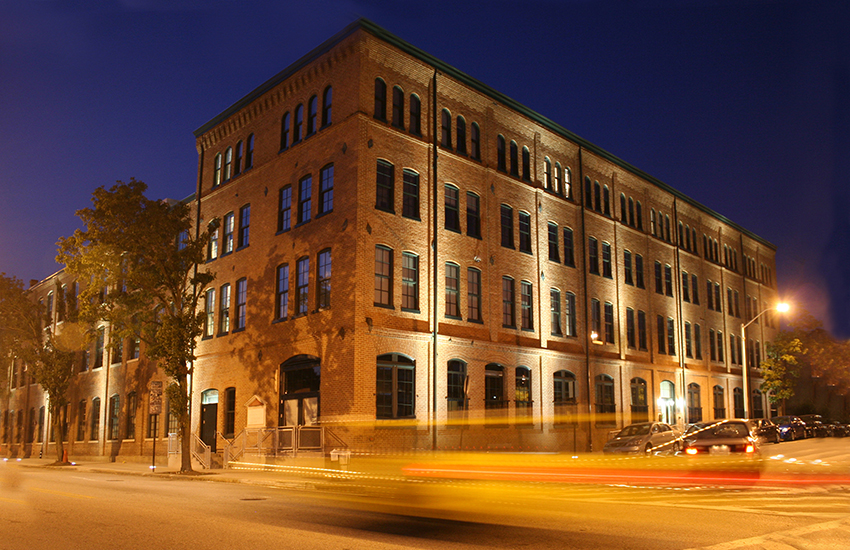 Miller's Court
Miller's Court 2015 Rudy Bruner Award for Urban Excellence - Gold Medal
Miller’s Court in Baltimore is the rehabilitation of an abandoned manufacturing building into a safe, welcoming community for teachers and educational nonprofits. The project was conceived as a way to improve teacher retention rates and therefore the quality of education while strengthening the neighborhood and local economy. Seawall Development Company and Marks, Thomas Architects pursued a collaborative, interactive design approach that included focus group meetings with teachers and local residents. The resulting LEED Gold certified complex includes 40 rental apartments offered at discounted rates for teachers and 30,000 square feet of office space and shared meeting rooms with contemporary, loft-like interiors. A teacher resource center provides copiers for printing class materials and includes a lending library. Charmington’s, a cooperatively owned independent café in the building, is a popular gathering spot for teachers, tenants, and the community.
Interaction is a key component of life and work in the $21.1 million development. The presence of Teach for America and other education, youth, and community service nonprofit tenants creates ongoing opportunities for information sharing, collaboration, and networking. Monthly brown bag lunches featuring guest speakers help promote connections among the nonprofits and with the broader community. The complex’s central, landscaped courtyard offers outdoor space for informal gatherings and community events.
The award-winning project has generated additional investment in the community of Remington as well as interest from other cities. More than a building, Miller’s Court builds economic value and social capital by connecting teachers and nonprofits, improving the surrounding neighborhood by encouraging investment and development, illustrates the value of collaborative partnerships, and demonstrates that a for-profit business can have a significant social impact.
-
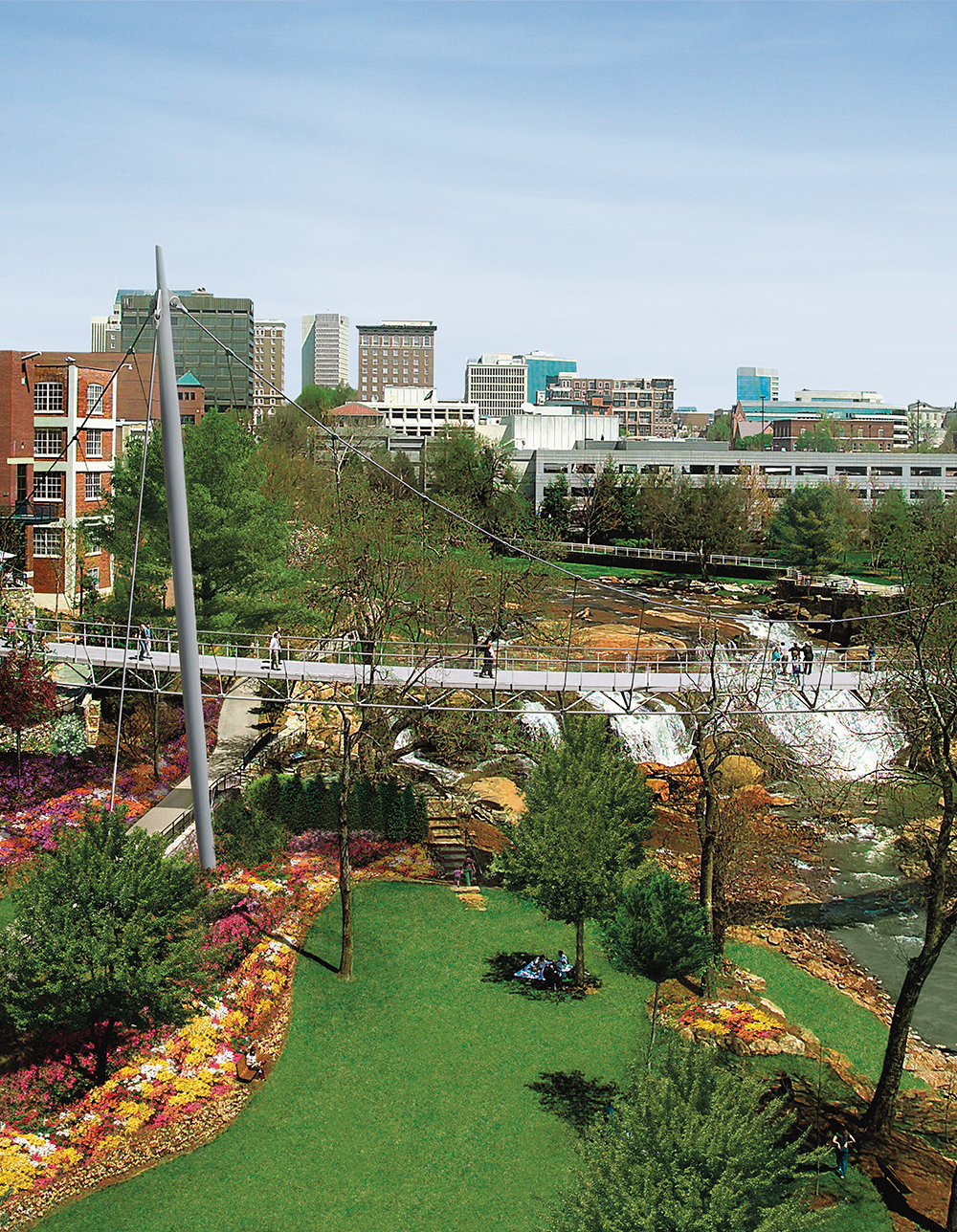 Falls Park on the Reedy
Falls Park on the Reedy 2015 Rudy Bruner Award for Urban Excellence - Silver Medal
Falls Park on the Reedy reclaimed a polluted river valley and obscured waterfall to create a 26-acre multi-use park and the new heart of Greenville, South Carolina. The project involved the removal of a highway bridge to liberate the falls and replaced it with a landmark pedestrian suspension bridge offering stunning views of the city’s “most distinctive feature.” Winding trails are interspersed with manicured lawns and wooded valleys that connect the city with the river and support a diversity or recreational activities.
Completed in 2004, Falls Park is the realization of a vision that began nearly 100 years earlier and was advanced in the 1960s by the Carolina Foothills Garden Club, which led an effort to establish a riverside park. Twenty years later, the club commissioned a master plan that sparked widespread collaboration among city government officials and agencies, private sponsors, and local developers to create a well-designed amenity used by a broad cross section of the city’s population.
Falls Park was completed with public funding, largely comprised of proceeds from the city’s hospitality tax. The $13.5 million investment has yielded impressive economic and social returns, influencing nearly $600 million in development, including new waterside hotels, housing, offices, and retail at RiverPlace. It is part of a growing network of green spaces including the nearly 20-mile Swamp Rabbit Trail that links downtown with nearby parks, neighborhoods, and public amenities.
-
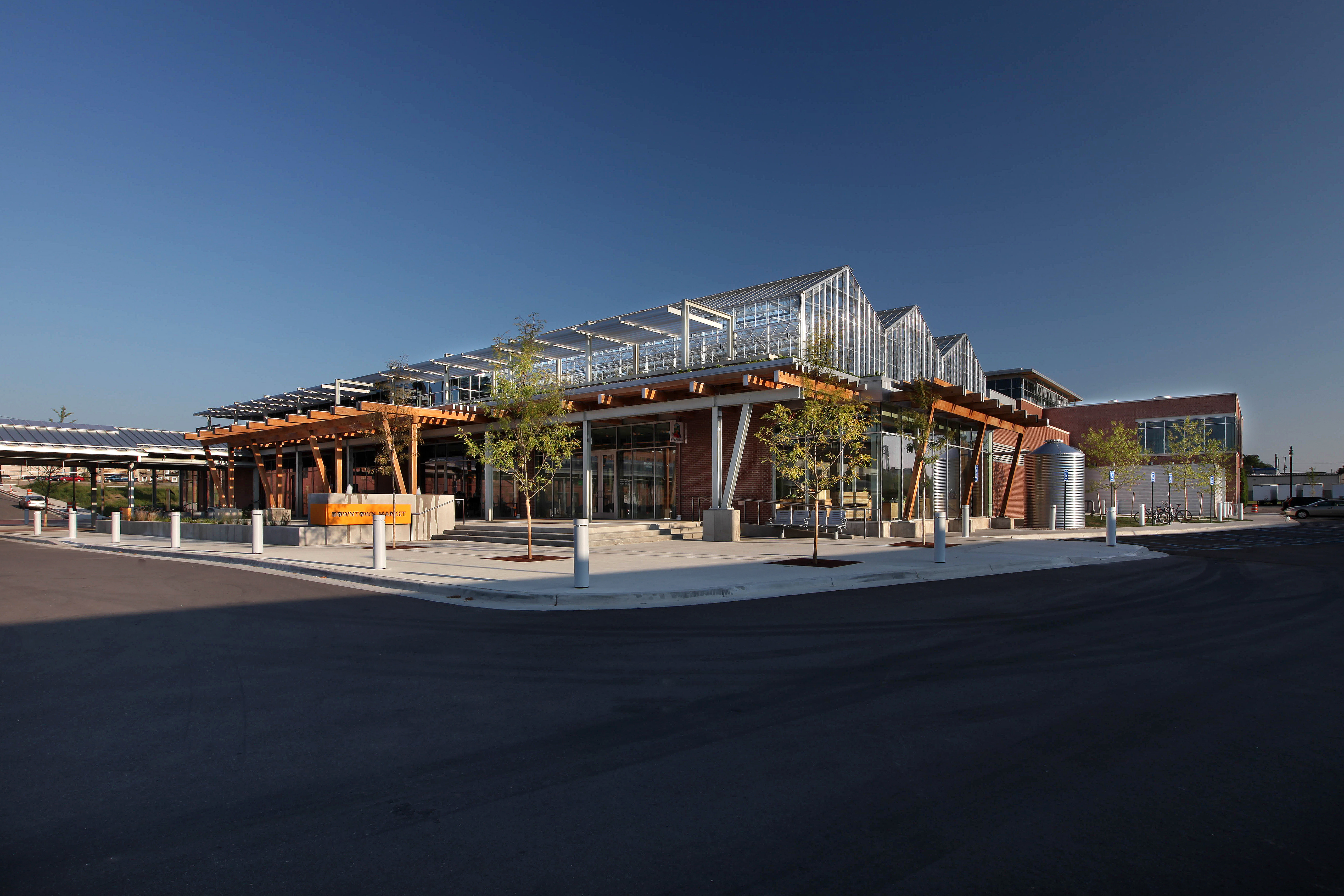 Grand Rapids Downtown Market
Grand Rapids Downtown Market 2015 Rudy Bruner Award for Urban Excellence - Silver Medal
Michigan’s Grand Rapids Downtown Market is a year-round farmers market that brings local food production, distribution, marketing, and education to the community. The first LEED Gold certified public market in the country, the market features 24 indoor vendors and a seasonal 52-stall outdoor shed featuring locally grown, produced, and prepared foods. Upper floors house educational classrooms, a commercial kitchen incubator, a rooftop greenhouse, offices and meeting rooms, and event spaces. The ground floor also includes two full-service restaurants.
The market is located just south of the downtown business district in Heartside, one of the area’s most economically challenged neighborhoods. Vendors accept Supplemental Nutrition Assistance Program (SNAP) food stamps, and the market partners with local nonprofits to provide educational scholarships to low-income residents along with complimentary transit passes and “Produce Bucks” that can be used at the market’s grocery store. The Heartside Gleaning Initiative collects excess fresh produce from market vendors for distribution to local food pantries.
The Downtown Market celebrates the local food system by linking the Grand Rapids community with many of the 12,220 farms in 11 surrounding counties and attracts a diversity of customers and additional investment to the southern edge of downtown. Educational programming is at the core of the market’s mission, and classes on cooking and nutrition are offered in the teaching kitchen, which features adjustable-height countertops that can be lowered for children. An incubator kitchen program assists start-up entrepreneurs with the development, production, and marketing of food products using a shared commercial kitchen.
-
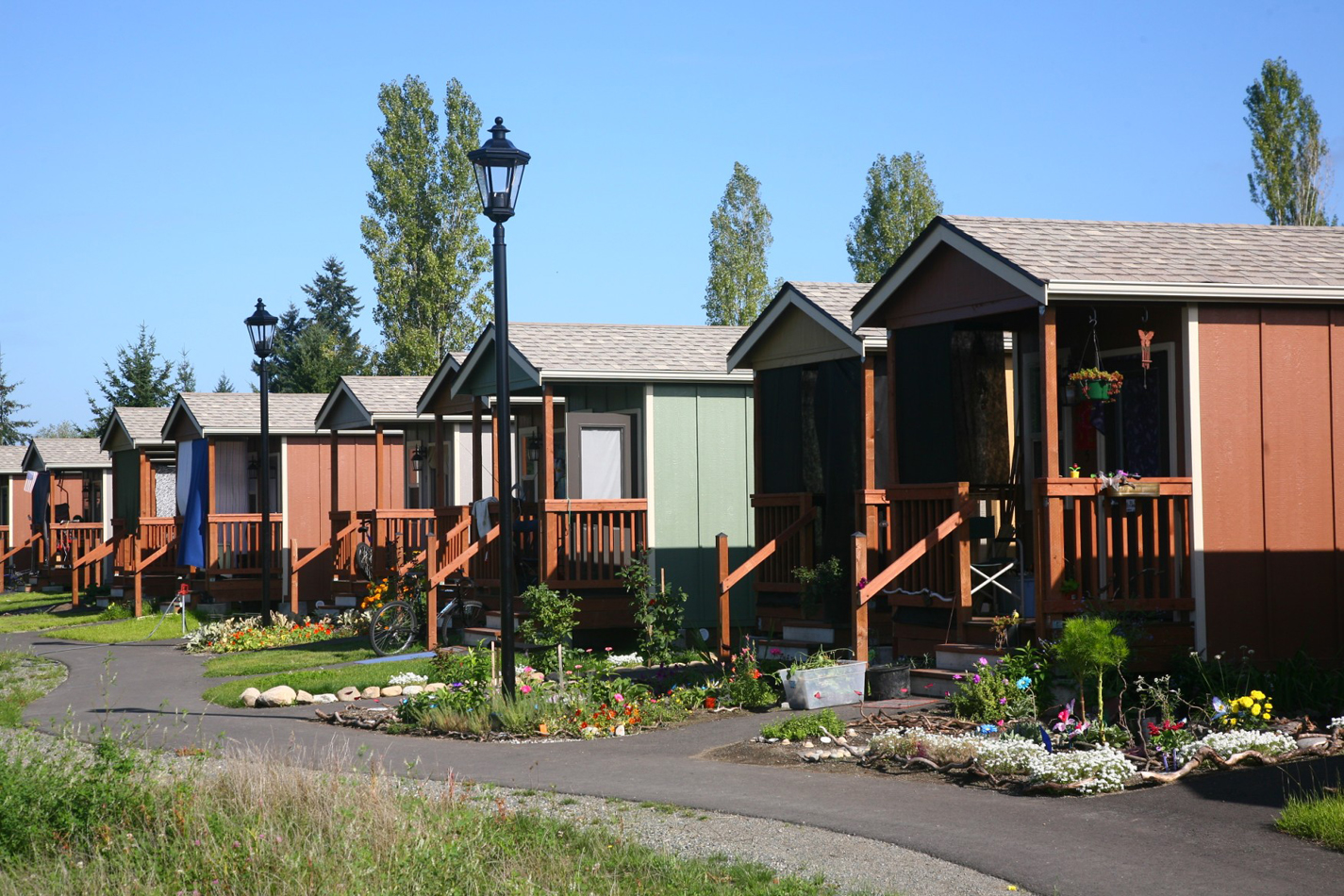 Quixote Village
Quixote Village 2015 Rudy Bruner Award for Urban Excellence - Silver Medal
Quixote Village in Olympia, Washington, is a low-cost, sustainable community composed of 30 tiny houses occupied by formerly homeless residents. Set on two acres of land donated by the county, the cottages face a central open space and retention ponds, and a 2,640-square-foot community building houses a communal kitchen and gathering room, showers and laundry facilities, staff offices, and a meeting room. Each 144-square-foot house provides just enough room for a single bed, a desk and chair, a half bath, and a closet. Front porches encourage interaction and contribute to the sense of community.
The village emerged from a self-governing tent community that formed in 2007 as a protested against an anti-homeless city ordinance. After the City of Olympia threatened to remove the camp, a local church offered to host the community on its grounds. Over the next seven years, Camp Quixote, as the tent community was called, moved from site to site among local churches with the help of Panza, a nonprofit formed to support Camp Quixote and, eventually, help develop a permanent home for its residents. The “tiny house” idea emerged from a series of workshops with camp residents and Panza members.
Although Panza serves as the legal owner and landlord, residents of Quixote Village have responsibilities and continue to play a significant role in governing the community. A full-time program and facilities manager and a resident advocate provide support for the community including property management, local transportation, and programmed activities, as well as individualized counseling that connects residents with education and employment opportunities, local mental and physical health services, and state and federal government aid.
-
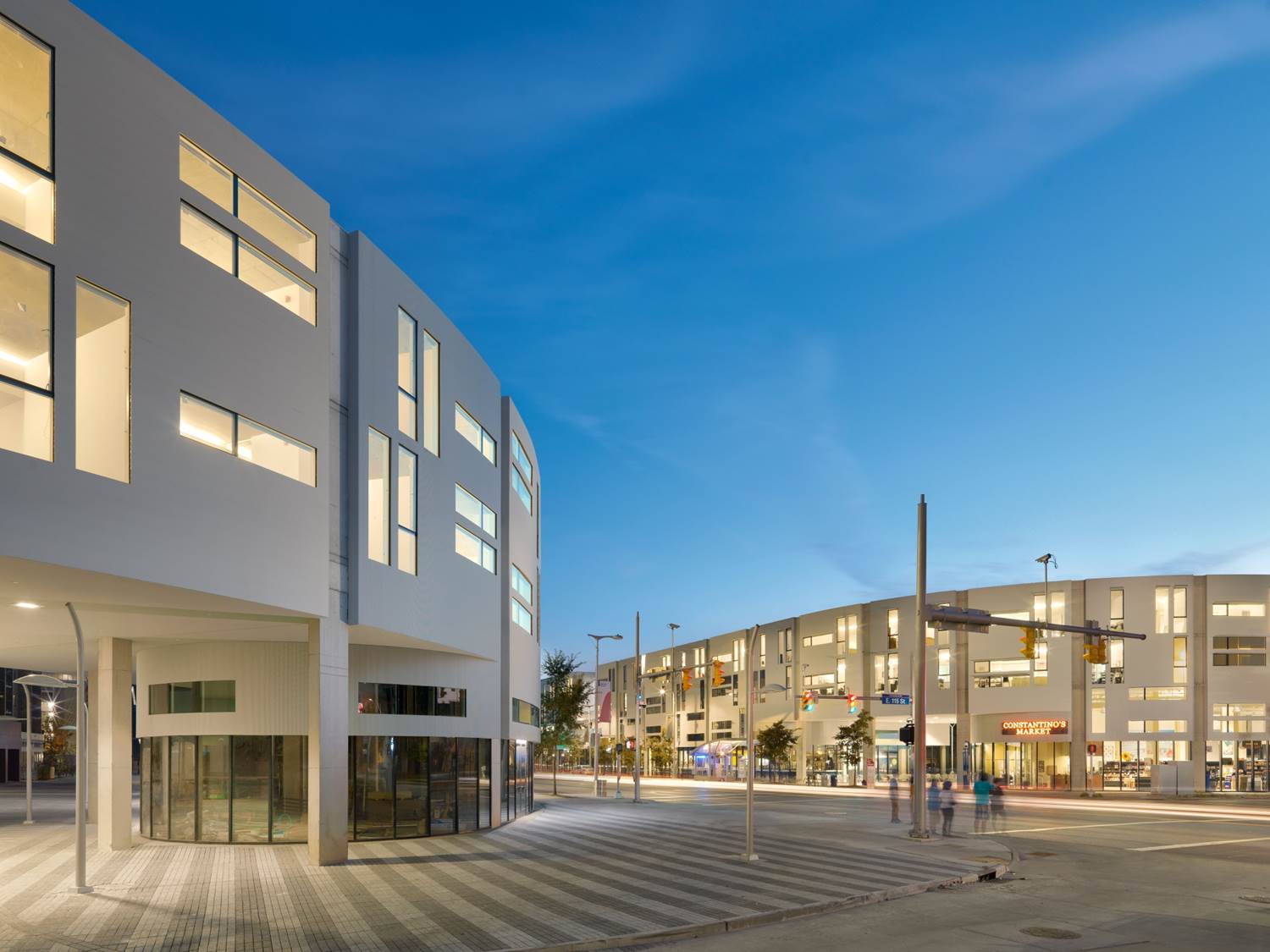 Uptown District
Uptown District 2015 Rudy Bruner Award for Urban Excellence - Silver Medal
Uptown District in Cleveland revitalized 8.2 acres of formerly vacant land into a mixed-use space and gateway to cultural, educational, and healthcare institutions. It is a sustainable, transit-oriented development located at a convergence of neighborhoods four miles east of downtown and a truly collaborative effort that has transformed two blocks of Euclid Avenue. Costing more than $200 million and consisting of over 223,500 square feet of new development, the district turned a “no-man’s-land” into a destination.
Uptown District is bookended by the Museum of Contemporary Art, housed in a new and iconic building, and the Cleveland Institute of Art, which consolidated and expanded its campus. In between, the “Wall” forms the heart of the district and features outdoor gathering spaces, retail shops and restaurants, and student and market-rate housing.
Envisioned as an arts and entertainment district, Uptown District was designed to create “connective tissue” linking Cleveland’s educational and cultural district with downtown and adjoining communities. Mid-block passageways and an internal “alley” provide visual and pedestrian connections between Euclid Avenue and adjoining buildings, plazas, and parking. The downtown and neighborhood linkage was improved through new rail stations both south of and within Uptown as well as by the popular HealthLine bus system that connects Uptown District with downtown and East Cleveland.
Uptown District is a continuing focus of the Cleveland Foundation’s Greater University Circle Initiative, a public-private partnership between leading anchor institutions, philanthropic organizations, financial institutions, community groups, and the City of Cleveland. The development highlights the role of anchor institutions—including Case Western University, whose land banking strategy laid the foundation for the project—in catalyzing and leading community change.
-
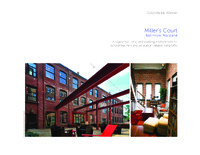 Miller's Court case study
Miller's Court case study
-
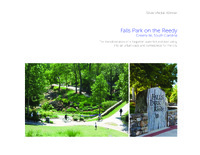 Falls Park on the Reedy case study
Falls Park on the Reedy case study
-
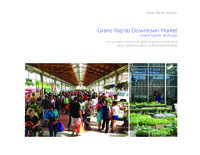 Grand Rapids Downtown Market case study
Grand Rapids Downtown Market case study
-
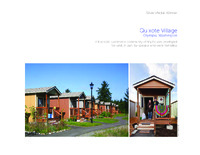 Quixote Village case study
Quixote Village case study
-
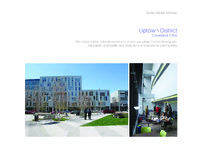 Uptown District case study
Uptown District case study
-
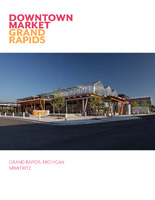 Grand Rapids Downtown Market application
Grand Rapids Downtown Market application
-
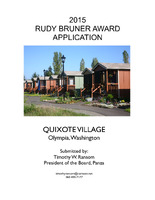 Quixote Village application
Quixote Village application
-
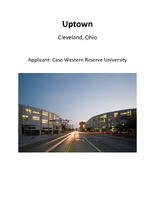 Uptown District application
Uptown District application
-
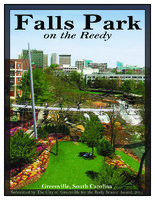 Falls Park on the Reedy application
Falls Park on the Reedy application
-
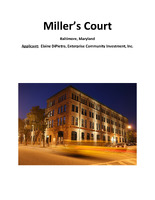 Miller's Court application
Miller's Court application
-
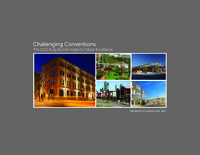 Challenging Conventions: The 2015 Rudy Bruner Award for Urban Excellence
Challenging Conventions: The 2015 Rudy Bruner Award for Urban Excellence
 Miller's Court 2015 Rudy Bruner Award for Urban Excellence - Gold Medal Miller’s Court in Baltimore is the rehabilitation of an abandoned manufacturing building into a safe, welcoming community for teachers and educational nonprofits. The project was conceived as a way to improve teacher retention rates and therefore the quality of education while strengthening the neighborhood and local economy. Seawall Development Company and Marks, Thomas Architects pursued a collaborative, interactive design approach that included focus group meetings with teachers and local residents. The resulting LEED Gold certified complex includes 40 rental apartments offered at discounted rates for teachers and 30,000 square feet of office space and shared meeting rooms with contemporary, loft-like interiors. A teacher resource center provides copiers for printing class materials and includes a lending library. Charmington’s, a cooperatively owned independent café in the building, is a popular gathering spot for teachers, tenants, and the community. Interaction is a key component of life and work in the $21.1 million development. The presence of Teach for America and other education, youth, and community service nonprofit tenants creates ongoing opportunities for information sharing, collaboration, and networking. Monthly brown bag lunches featuring guest speakers help promote connections among the nonprofits and with the broader community. The complex’s central, landscaped courtyard offers outdoor space for informal gatherings and community events. The award-winning project has generated additional investment in the community of Remington as well as interest from other cities. More than a building, Miller’s Court builds economic value and social capital by connecting teachers and nonprofits, improving the surrounding neighborhood by encouraging investment and development, illustrates the value of collaborative partnerships, and demonstrates that a for-profit business can have a significant social impact.
Miller's Court 2015 Rudy Bruner Award for Urban Excellence - Gold Medal Miller’s Court in Baltimore is the rehabilitation of an abandoned manufacturing building into a safe, welcoming community for teachers and educational nonprofits. The project was conceived as a way to improve teacher retention rates and therefore the quality of education while strengthening the neighborhood and local economy. Seawall Development Company and Marks, Thomas Architects pursued a collaborative, interactive design approach that included focus group meetings with teachers and local residents. The resulting LEED Gold certified complex includes 40 rental apartments offered at discounted rates for teachers and 30,000 square feet of office space and shared meeting rooms with contemporary, loft-like interiors. A teacher resource center provides copiers for printing class materials and includes a lending library. Charmington’s, a cooperatively owned independent café in the building, is a popular gathering spot for teachers, tenants, and the community. Interaction is a key component of life and work in the $21.1 million development. The presence of Teach for America and other education, youth, and community service nonprofit tenants creates ongoing opportunities for information sharing, collaboration, and networking. Monthly brown bag lunches featuring guest speakers help promote connections among the nonprofits and with the broader community. The complex’s central, landscaped courtyard offers outdoor space for informal gatherings and community events. The award-winning project has generated additional investment in the community of Remington as well as interest from other cities. More than a building, Miller’s Court builds economic value and social capital by connecting teachers and nonprofits, improving the surrounding neighborhood by encouraging investment and development, illustrates the value of collaborative partnerships, and demonstrates that a for-profit business can have a significant social impact. Falls Park on the Reedy 2015 Rudy Bruner Award for Urban Excellence - Silver Medal Falls Park on the Reedy reclaimed a polluted river valley and obscured waterfall to create a 26-acre multi-use park and the new heart of Greenville, South Carolina. The project involved the removal of a highway bridge to liberate the falls and replaced it with a landmark pedestrian suspension bridge offering stunning views of the city’s “most distinctive feature.” Winding trails are interspersed with manicured lawns and wooded valleys that connect the city with the river and support a diversity or recreational activities. Completed in 2004, Falls Park is the realization of a vision that began nearly 100 years earlier and was advanced in the 1960s by the Carolina Foothills Garden Club, which led an effort to establish a riverside park. Twenty years later, the club commissioned a master plan that sparked widespread collaboration among city government officials and agencies, private sponsors, and local developers to create a well-designed amenity used by a broad cross section of the city’s population. Falls Park was completed with public funding, largely comprised of proceeds from the city’s hospitality tax. The $13.5 million investment has yielded impressive economic and social returns, influencing nearly $600 million in development, including new waterside hotels, housing, offices, and retail at RiverPlace. It is part of a growing network of green spaces including the nearly 20-mile Swamp Rabbit Trail that links downtown with nearby parks, neighborhoods, and public amenities.
Falls Park on the Reedy 2015 Rudy Bruner Award for Urban Excellence - Silver Medal Falls Park on the Reedy reclaimed a polluted river valley and obscured waterfall to create a 26-acre multi-use park and the new heart of Greenville, South Carolina. The project involved the removal of a highway bridge to liberate the falls and replaced it with a landmark pedestrian suspension bridge offering stunning views of the city’s “most distinctive feature.” Winding trails are interspersed with manicured lawns and wooded valleys that connect the city with the river and support a diversity or recreational activities. Completed in 2004, Falls Park is the realization of a vision that began nearly 100 years earlier and was advanced in the 1960s by the Carolina Foothills Garden Club, which led an effort to establish a riverside park. Twenty years later, the club commissioned a master plan that sparked widespread collaboration among city government officials and agencies, private sponsors, and local developers to create a well-designed amenity used by a broad cross section of the city’s population. Falls Park was completed with public funding, largely comprised of proceeds from the city’s hospitality tax. The $13.5 million investment has yielded impressive economic and social returns, influencing nearly $600 million in development, including new waterside hotels, housing, offices, and retail at RiverPlace. It is part of a growing network of green spaces including the nearly 20-mile Swamp Rabbit Trail that links downtown with nearby parks, neighborhoods, and public amenities. Grand Rapids Downtown Market 2015 Rudy Bruner Award for Urban Excellence - Silver Medal Michigan’s Grand Rapids Downtown Market is a year-round farmers market that brings local food production, distribution, marketing, and education to the community. The first LEED Gold certified public market in the country, the market features 24 indoor vendors and a seasonal 52-stall outdoor shed featuring locally grown, produced, and prepared foods. Upper floors house educational classrooms, a commercial kitchen incubator, a rooftop greenhouse, offices and meeting rooms, and event spaces. The ground floor also includes two full-service restaurants. The market is located just south of the downtown business district in Heartside, one of the area’s most economically challenged neighborhoods. Vendors accept Supplemental Nutrition Assistance Program (SNAP) food stamps, and the market partners with local nonprofits to provide educational scholarships to low-income residents along with complimentary transit passes and “Produce Bucks” that can be used at the market’s grocery store. The Heartside Gleaning Initiative collects excess fresh produce from market vendors for distribution to local food pantries. The Downtown Market celebrates the local food system by linking the Grand Rapids community with many of the 12,220 farms in 11 surrounding counties and attracts a diversity of customers and additional investment to the southern edge of downtown. Educational programming is at the core of the market’s mission, and classes on cooking and nutrition are offered in the teaching kitchen, which features adjustable-height countertops that can be lowered for children. An incubator kitchen program assists start-up entrepreneurs with the development, production, and marketing of food products using a shared commercial kitchen.
Grand Rapids Downtown Market 2015 Rudy Bruner Award for Urban Excellence - Silver Medal Michigan’s Grand Rapids Downtown Market is a year-round farmers market that brings local food production, distribution, marketing, and education to the community. The first LEED Gold certified public market in the country, the market features 24 indoor vendors and a seasonal 52-stall outdoor shed featuring locally grown, produced, and prepared foods. Upper floors house educational classrooms, a commercial kitchen incubator, a rooftop greenhouse, offices and meeting rooms, and event spaces. The ground floor also includes two full-service restaurants. The market is located just south of the downtown business district in Heartside, one of the area’s most economically challenged neighborhoods. Vendors accept Supplemental Nutrition Assistance Program (SNAP) food stamps, and the market partners with local nonprofits to provide educational scholarships to low-income residents along with complimentary transit passes and “Produce Bucks” that can be used at the market’s grocery store. The Heartside Gleaning Initiative collects excess fresh produce from market vendors for distribution to local food pantries. The Downtown Market celebrates the local food system by linking the Grand Rapids community with many of the 12,220 farms in 11 surrounding counties and attracts a diversity of customers and additional investment to the southern edge of downtown. Educational programming is at the core of the market’s mission, and classes on cooking and nutrition are offered in the teaching kitchen, which features adjustable-height countertops that can be lowered for children. An incubator kitchen program assists start-up entrepreneurs with the development, production, and marketing of food products using a shared commercial kitchen. Quixote Village 2015 Rudy Bruner Award for Urban Excellence - Silver Medal Quixote Village in Olympia, Washington, is a low-cost, sustainable community composed of 30 tiny houses occupied by formerly homeless residents. Set on two acres of land donated by the county, the cottages face a central open space and retention ponds, and a 2,640-square-foot community building houses a communal kitchen and gathering room, showers and laundry facilities, staff offices, and a meeting room. Each 144-square-foot house provides just enough room for a single bed, a desk and chair, a half bath, and a closet. Front porches encourage interaction and contribute to the sense of community. The village emerged from a self-governing tent community that formed in 2007 as a protested against an anti-homeless city ordinance. After the City of Olympia threatened to remove the camp, a local church offered to host the community on its grounds. Over the next seven years, Camp Quixote, as the tent community was called, moved from site to site among local churches with the help of Panza, a nonprofit formed to support Camp Quixote and, eventually, help develop a permanent home for its residents. The “tiny house” idea emerged from a series of workshops with camp residents and Panza members. Although Panza serves as the legal owner and landlord, residents of Quixote Village have responsibilities and continue to play a significant role in governing the community. A full-time program and facilities manager and a resident advocate provide support for the community including property management, local transportation, and programmed activities, as well as individualized counseling that connects residents with education and employment opportunities, local mental and physical health services, and state and federal government aid.
Quixote Village 2015 Rudy Bruner Award for Urban Excellence - Silver Medal Quixote Village in Olympia, Washington, is a low-cost, sustainable community composed of 30 tiny houses occupied by formerly homeless residents. Set on two acres of land donated by the county, the cottages face a central open space and retention ponds, and a 2,640-square-foot community building houses a communal kitchen and gathering room, showers and laundry facilities, staff offices, and a meeting room. Each 144-square-foot house provides just enough room for a single bed, a desk and chair, a half bath, and a closet. Front porches encourage interaction and contribute to the sense of community. The village emerged from a self-governing tent community that formed in 2007 as a protested against an anti-homeless city ordinance. After the City of Olympia threatened to remove the camp, a local church offered to host the community on its grounds. Over the next seven years, Camp Quixote, as the tent community was called, moved from site to site among local churches with the help of Panza, a nonprofit formed to support Camp Quixote and, eventually, help develop a permanent home for its residents. The “tiny house” idea emerged from a series of workshops with camp residents and Panza members. Although Panza serves as the legal owner and landlord, residents of Quixote Village have responsibilities and continue to play a significant role in governing the community. A full-time program and facilities manager and a resident advocate provide support for the community including property management, local transportation, and programmed activities, as well as individualized counseling that connects residents with education and employment opportunities, local mental and physical health services, and state and federal government aid. Uptown District 2015 Rudy Bruner Award for Urban Excellence - Silver Medal Uptown District in Cleveland revitalized 8.2 acres of formerly vacant land into a mixed-use space and gateway to cultural, educational, and healthcare institutions. It is a sustainable, transit-oriented development located at a convergence of neighborhoods four miles east of downtown and a truly collaborative effort that has transformed two blocks of Euclid Avenue. Costing more than $200 million and consisting of over 223,500 square feet of new development, the district turned a “no-man’s-land” into a destination. Uptown District is bookended by the Museum of Contemporary Art, housed in a new and iconic building, and the Cleveland Institute of Art, which consolidated and expanded its campus. In between, the “Wall” forms the heart of the district and features outdoor gathering spaces, retail shops and restaurants, and student and market-rate housing. Envisioned as an arts and entertainment district, Uptown District was designed to create “connective tissue” linking Cleveland’s educational and cultural district with downtown and adjoining communities. Mid-block passageways and an internal “alley” provide visual and pedestrian connections between Euclid Avenue and adjoining buildings, plazas, and parking. The downtown and neighborhood linkage was improved through new rail stations both south of and within Uptown as well as by the popular HealthLine bus system that connects Uptown District with downtown and East Cleveland. Uptown District is a continuing focus of the Cleveland Foundation’s Greater University Circle Initiative, a public-private partnership between leading anchor institutions, philanthropic organizations, financial institutions, community groups, and the City of Cleveland. The development highlights the role of anchor institutions—including Case Western University, whose land banking strategy laid the foundation for the project—in catalyzing and leading community change.
Uptown District 2015 Rudy Bruner Award for Urban Excellence - Silver Medal Uptown District in Cleveland revitalized 8.2 acres of formerly vacant land into a mixed-use space and gateway to cultural, educational, and healthcare institutions. It is a sustainable, transit-oriented development located at a convergence of neighborhoods four miles east of downtown and a truly collaborative effort that has transformed two blocks of Euclid Avenue. Costing more than $200 million and consisting of over 223,500 square feet of new development, the district turned a “no-man’s-land” into a destination. Uptown District is bookended by the Museum of Contemporary Art, housed in a new and iconic building, and the Cleveland Institute of Art, which consolidated and expanded its campus. In between, the “Wall” forms the heart of the district and features outdoor gathering spaces, retail shops and restaurants, and student and market-rate housing. Envisioned as an arts and entertainment district, Uptown District was designed to create “connective tissue” linking Cleveland’s educational and cultural district with downtown and adjoining communities. Mid-block passageways and an internal “alley” provide visual and pedestrian connections between Euclid Avenue and adjoining buildings, plazas, and parking. The downtown and neighborhood linkage was improved through new rail stations both south of and within Uptown as well as by the popular HealthLine bus system that connects Uptown District with downtown and East Cleveland. Uptown District is a continuing focus of the Cleveland Foundation’s Greater University Circle Initiative, a public-private partnership between leading anchor institutions, philanthropic organizations, financial institutions, community groups, and the City of Cleveland. The development highlights the role of anchor institutions—including Case Western University, whose land banking strategy laid the foundation for the project—in catalyzing and leading community change. Miller's Court case study
Miller's Court case study  Falls Park on the Reedy case study
Falls Park on the Reedy case study  Grand Rapids Downtown Market case study
Grand Rapids Downtown Market case study  Quixote Village case study
Quixote Village case study  Uptown District case study
Uptown District case study  Grand Rapids Downtown Market application
Grand Rapids Downtown Market application  Quixote Village application
Quixote Village application  Uptown District application
Uptown District application  Falls Park on the Reedy application
Falls Park on the Reedy application  Miller's Court application
Miller's Court application  Challenging Conventions: The 2015 Rudy Bruner Award for Urban Excellence
Challenging Conventions: The 2015 Rudy Bruner Award for Urban Excellence